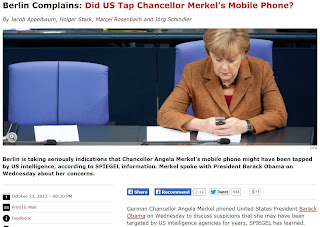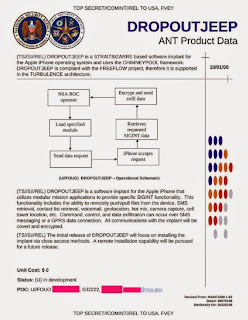Republican
Bill Cassidy is leaving
Louisiana's
6th Congressional District seat to run against incumbent Democrat Senator Mary Landrieu.
This leaves LA CD 6 as an open seat; also, this means that there are a total of five Democrats, including incumbent Senator Landrieu, three Republicans, including Congressman Cassidy, and one Libertarian
running for the US Senate seat from Louisiana in 2014.
In 2012, Republican Bill Cassidy won LA CD 6 with 79.4% of the vote; no Democrat was in the race. In 2010, incumbent Cassidy won with nearly two-thirds of the vote against Democrat Merritt E. McDonald, Sr., who had just over one third of the vote. In the past several elections, this district showed solid support for the Republican Party. We can project that this district is safe for the Republicans.
However, in 2014 there is a Democrat challenger:
Edwin Edwards. Edwards, 87, is a former governor of Louisiana, the longest-serving state governor in post-Reconstruction America, and a former Congressman. Accused of corruption, ties to organized crime, receiving illegally-donated campaign money, and other crimes, Edwards was finally sent to prison in 2002, convicted of a variety of charges, including racketeering, extortion and money laundering.
While in prison, Edwards divorced his second wife, then
met a woman 51 years younger than he is; the two were married six months after Edwards' release from prison in 2011. The story of Edwards' marriage to his young wife Trina is the subject of a reality show,
The Governor's Wife.
In light of this background, it is interesting that Louisiana Democrat Mary Landrieu has
skipped endorsing Edwards for the LA CD 6 race. Landrieu's dodge of endorsing Edwards as well as her dodge of explaining why she would not endorse him have played well with at least some in Louisiana.
The question that comes to mind is: Why? Why would she not endorse him?
Louisiana uses a
non-partisan blanket primary system which, ironically, was adopted in 1975 by then-governor Edwards. The Louisiana primary election is thus on November 4; if no candidate receives more than 50% of the vote, then the top two candidates will compete in the general run-off election on December 6.
With two other Democrats running in the
6 CD race this year, the
Democratic State Central Committee of Louisiana has
already endorsed Edwards, as well as Landrieu herself. (I can understand endorsing an incumbent Senator against challengers, but I wonder how the other two Democrat candidates in the Congressional race must feel about being sidelined so the Democrats can give the ball to a convicted criminal.)
In fact, the matter has
received media attention including a published list of Louisiana Democrat Central Committee members who may have been involved in endorsing a convicted criminal for Congress, along with some analysis as to why this might be happening and how it might impact the Senate race:
They know Edwards can't win, and there are other Democrats in the race. They have perfectly legitimate "outs" here; it's not necessary to endorse Edwin Edwards and bring upon themselves the shame and ridicule inherent in such a decision. They're doing it because they think Edwards can turn out the black vote in the 6th District and thus help Mary Landrieu in December. Plain and simple; they think Edwards can do it, and the Democrats in the race who are not coming off a stretch in federal prison on public corruption charges – Peter Williams and Richard Lieberman, by name – can't.
So they'll endorse a criminal in order to keep one of their candidates viable for another office. That he's a criminal doesn't bother them in the least. Wonder why that is.
We saw how Democrats governed this state for 100 years, and rampant criminality was the norm. And they're still endorsing criminals. Maybe somebody can explain how this endorsement is legitimate politics and not at the very least a looking of the other way at public corruption, but we doubt it.
If there are any Democrats in this state who don't support criminal conduct in public office, they ought to make a run at Peterson's chairmanship of the Louisiana Democrat Party. Until that time, we're going to call that a criminal syndicate disguised as a political party.
Why does Senator Landrieu not follow suit with the Louisiana Democratic Party, the organization that endorsed her, and endorse Edwards? Especially considering the suggestion that the whole reason Edwards was endorsed in a race he is believed to not be able to win is to get out the vote to support Landrieu so the Democrats can retain her in her seat in the US Senate?
__________
Just as CD 6 seems to be quite safe for Republicans, some information suggests the entire state is leaning more toward Republicans. For example,
Louisiana currently has 5 of 6 Congressmen, 1 of 2 Senators, and 7 of 7 statewide elected officeholders from the GOP; in statewide and Congressional offices, Democrats face a near shut-out. Additionally, the
Louisiana Family Forum is
said to report that the Louisiana legislature has over the past decade begun to vote much more conservatively on family and life issues, suggesting a trend that could work toward Republican advantage this year.
Additionally, the history of Senator Landrieu's elections sends mixed signals as far as predicting the outcome of her bid for re-election. In
Louisiana's 2008 election for the US Senate, Landrieu took just over 52% of the vote in November, allowing her to win re-election without a run-off.
However,
in 2002 Landrieu took 46% in the open primary, with Republican challenger
Suzanne Haik Terrell coming in second with just over 27%. Landrieu then won re-election in the run-off, taking just under 52% of the vote.
What is very interesting, though, is the controversy surrounding Landrieu's first election to the US Senate, which
happened in 1996. Initially, Republican
Woody Jenkins took over 26% of the vote, with Landrieu taking just over 21% in the primary. This sent these two to the run-off election, where exit polls showed Jenkins ahead of Landrieu 51% to 49%. However, a late surge in Democrat stronghold New Orleans left Landrieu taking New Orleans by 100,000 votes, placing her just barely over the top statewide, with a 5788-vote margin; outside New Orleans, Jenkins had 53% of the vote.
Jenkins appealed the matter to the Senate Rules Committee, asking the Senate not to seat Landrieu, charging that her election was won fraudulently. It should be noted that 1996 was also the year Bill Clinton won re-election, and that the Senate was controlled by Republicans since the 1994 election. After a
stormy 10-month investigation, the Senate let the election results stand.
More recent analysis shows that Senator Landrieu's hold on much of Louisiana may be less tenuous, but that it may also have peaked.
In this light, Senator Landrieu may be making a statement about former governor Edwards, but she may also be simply distancing herself from a convicted dirty politician whose own campaign will benefit hers by turning out voters in a race where literally every vote is expected to count: she needs the votes Edwards may bring to the polls, but can't afford to lose the votes of those who support her but not Edwards.
__________
Scandals - however pertinent or not - seem to be a significant backdrop to this race.
For example, one scandal which seems to be getting some traction centers around Senator Landrieu's use of officially-funded transportation for campaign- and fundraising-related activities. Known in some circles as "Chartergate", the scandal has landed Senator Landrieu the nickname "Air Mary".
Apparently, Senator Landrieu racked up some $34,000 of questionable travel expenses since 2000. In response, Landrieu has promised that her staff will conduct a thorough review of her travel expenses. Then, there have been cries that the review has not been done as fast as it should have.
More significant than the concern that 11% of her total travel expenses were improperly billed, however, is the growing picture of Landrieu as a Washington insider, not someone who represents the Republican-leaning state of Louisiana. From
The Scandals Are Catching Up With Mary Landrieu by Scott McCay, September 16, 2014:
But the travel scandal is a giant piece of a building narrative of Landrieu as a privileged Washington insider out of touch with the people she purportedly represents. A web ad put together by Karl Rove's American Crossroads PAC hammered Landrieu for her D.C. attachments and $2.5 million Washington mansion last month, and with Chartergate back in full flower that narrative is taking hold.
The expensive mansion in the Washington area is only part of another scandal, this one dealing with Landrieu's residency. From
Judge throws out suit challenging Mary Landrieu's residency by Julia O'Donoghue, September 5, 2014:
Baton Rouge state court judge Wilson Fields dismissed a lawsuit challenging U.S. Sen. Mary Landrieu's Louisiana residency Friday morning after hearing approximately 45 minutes of discussion on the case.
[snip]
Landrieu is Louisiana's only Democratic statewide elected official and considered one of the most vulnerable incumbents in the U.S. Congress up for reelection this fall. Her campaign has said attacks related to her Louisiana residency are political in nature and were never legally sound.
[snip]
Landrieu listed her parents house in New Orleans as her Louisiana domicile when she qualified to run for office earlier this month. The Senator, her eight siblings and mother own the New Orleans house together, though Landrieu also owns a home with her husband in Washington D.C.
One thing Senator Landrieu says she brings to the table as an incumbent who has now spent three terms in DC, something that a challenger would not bring to the table simply because that challenger is not a three-term incumbent, is "clout". From
16 questions for Mary Landrieu by Philip Rucker, May 27, 2014:
The Washington Post: What is your argument for a fourth term? Why should the voters of Louisiana keep you there? What is the case you're trying to make?
Sen. Mary Landrieu: "The voters over 18 years have established great clout in Washington. It doesn't belong to me; it belongs to them. As chair of the energy committee, they sit at the head of the table with the gavel. As chair of homeland security, the state sits at the head of the table with the gavel. It's not easy -- you can't just be awarded those gavels. It comes with time and it comes with persistence. So I think, you know, the state has clout that it should really think carefully about before giving up. It turns into jobs and opportunities and projects and funding that comes to the state.
However, the whole "clout" thing just plays into the theme of a privileged insider, one who may be out of touch with the people of the state that sent her to Washington to begin with. Back to
The Scandals Are Catching Up With Mary Landrieu for its conclusion:
George Will once said that a good scandal merely reinforces what people already believe about its subject, and the Air Mary disclosures fit nicely with that truism. Landrieu, in fact, has touted her status as a powerful member of the D.C. elite as an asset to her voters through the years. Tepid media coverage to date aside, how ironic that Louisianans tailgating at LSU or gathering around office water-coolers should be discussing that very subject as proof in their minds she's been in Washington too long.
So, does Senator Landrieu represent Louisiana in the US Senate?
Or, does she represent the Democrats?
__________
Senator Mary Landrieu has been endorsed by the gun control crowd.
The Hayride, a
conservative Louisiana news source established in 2009, had
this to say (September 23, 2014):
The same gun control advocacy group that has endorsed House Minority Leader Nancy Pelosi has also just endorsed Sen. Mary Landrieu (D-LA), citing her support for gun control.
Former New York Mayor Michael Bloomberg's "Gun Sense Voter" group endorsed Landrieu last night because she voted for the Manchin-Toomey gun control amendment back in 2013 that Bloomberg, himself, lobbied for.
Republican National Committee spokesman Ben Voelkel called Landrieu out-of-touch with the state, opting to vote with President Obama and Bloomberg on issues like gun control.
"Law abiding Louisianans deserve to have their Second Amendment rights protected, not attacked like Senator Landrieu and her anti-gun allies have made it their mission to do," said Voelkel. "Mary Landrieu has lost touch with Louisiana, which is why she keeps supporting Washington, D.C. mandates like ObamaCare and gun grabbers like Michael Bloomberg."
A legitimate question to ask is: To what extent does Senator Landrieu represent Democrat interests instead of Louisiana interests?
Searchlight Leadership PAC is a PAC affiliated with Democrat Senate Majority Leader Harry Reid from Nevada. Such leadership PACs can give money directly to candidates, but also, under certain circumstances, they can spend an unlimited amount of money to influence certain election outcomes. Having an important job as Senate Majority Leader, Reid is a big name, and brings in big money to his PAC. He can then channel this money to help other Senators get elected. By helping get Democrats elected, Reid maintains his own powerful position: first, he maintains the Democrats in the majority, thus maintaining himself as majority leader; second, since he has helped these other Democrats, they owe him favors, and this increases his power, and one favor they owe him is to support him as majority leader in the Senate (or as minority leader, should it go that way).
This PAC moves big money, and has for years. A quick look at
their candidates page shows some races that Senator Reid thinks are key to holding the Senate.
However, a Democrat Senator facing a tough re-election bid in a Republican state might find that having her name on Reid's website - or even having her state marked on the map on his website - might be a little counterproductive. So, to find the money going from this PAC to Senator Landrieu in this election cycle, one may have to dig a little deeper.
In March and again
in June of 2013, Harry Reid's Leadership PAC donated $5000 to Mary Landrieu's campaign.
But, it only begins there. Money doesn't just get sent from someone to Reid's PAC to some other politician's campaign; it also goes directly from that someone to this other politician's campaign. It also gets moved to other PACs and then to that other politician's campaign. When you compare the list of donors to Landrieu's campaign with the list of donors to all these PACs, and then compare the list of PACs that these donors give to with the list of PACs that give to Landrieu's campaign, you start to get the idea. :)
These politicians in Washington have a generous sampling of attorneys sprinkled in among them, and they are the ones who write these campaign finance laws. They make it complicated so the voting public cannot easily understand what is going on, but so the politicians themselves understand exactly what is happening. They make it difficult for us to follow the criss-crossing money trails, but they know exactly how to launder money through the system they themselves organized to the appropriate campaigns to keep themselves in power.
__________
The Democrats have an agenda, and Mary Landrieu plays a key role in that agenda.
Their main goal is to keep enough of the voters of Louisiana, a state which certainly supports conservative values, in the dark or confused, that the Democrats themselves remain in power pushing their radical agenda.
And the Democrats are doing everything they can, from endorsing criminals in other races to funneling money into Landrieu's campaign, all to keep their clout at the expense of the decent people in Louisiana.

































